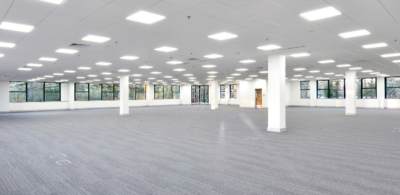Miniaturization of electronics over the past decade has enabled sophisticated and powerful devices to emerge. Today we see computers, high-definition cameras, GPS receivers, radios, music players, sound recorders and telephones all combined in small, hand-held smartphones that are used everywhere.
As the power of individual components has increased exponentially, their cost has reduced dramatically. Computers are being built into almost everything — the Internet of Things, or “IoT,” has been born and it’s developing more rapidly than anyone could have anticipated. The real estate sector is not immune to the impact of the massive growth of IoT, as corporate and residential real estate in particular benefit from technological advancements.
The Growth of the Internet of Things
The IoT is a rapidly expanding network of interconnected computerized devices that allow us to monitor, control, better understand and improve our daily lives. As opposed to smartphones, smart TVs, PCs and tablets, the IoT is composed of computers that are embedded within vehicles, security systems, environmental control systems, even household appliances — all capable of communicating with each other over the public internet. By 2020 there will be 10 billion traditional computers and mobile devices in the world (an average of three per adult) and almost 30 billion IoT devices.
Benefits of IoT for Commercial Real Estate
IoT devices can monitor buildings and their surroundings, interacting with one another to learn and automatically control temperature, humidity, air quality and lighting levels. IoT in buildings can create a better environment, more productive and contented occupiers, efficient operations and cost savings. Building management systems can be interconnected to tenants’ own systems, allowing a level of control, monitoring and efficiency that has not previously been possible.
The benefits to property owners and occupiers are easy to identify. No longer do technicians need to spend time traveling to the site, connecting physically to the control panels and making manual changes to air conditioning, power, security and fire systems. Instead, by replacing traditional proprietary systems with internet-enabled controllers and sensors, these systems can be monitored in real-time and updated remotely.
The Threat of Cybercrime and Cybersecurity
Cybersecurity is the fastest-growing sector in IT, fueled by the rapid growth in the number of networks and interconnected devices, the rapid expansion of products and services available over the internet and the emergence of cybercriminals who set out to exploit any weaknesses for their own gain. Recent worldwide cyberattacks on corporate and government computer networks have highlighted the financial and reputational risks.
These risks extend to commercial real estate owners and occupiers. The fact that these devices are deployed in large numbers, frequently out of sight in plant rooms and ceiling voids, increases the risk of being compromised. Cross-connection to centralized building management systems and corporate networks could dramatically increase the scope and seriousness of a successful attack.
In the wrong hands, IoT devices could, for example, be used to set off nuisance alarms or interfere with environmental settings. More serious intrusions might result in locking out authorized users or enabling access by unauthorized visitors.
Data theft and security breaches have affected major corporations and government departments including Sony, Target and the IRS. IoT devices can enable hackers to gain access to sensitive data and transmit it to remote locations.
How Can You Minimize the Risk of Cybercrime in Your Building?
Given the growth of IoT and the benefits to building owners and occupiers alike, these devices will continue to be installed in ever-increasing numbers. We recommend a collaborative approach between IT and property/real estate teams to manage and control any increased risks of threats.
We encourage our clients to adopt the following measures:
- Update cybersecurity policies and procedures to embrace and acknowledge the IoT.
- Ensure that IoT devices and systems have been independently tested before installation.
- Recognize risks by conducting regular reviews, penetration tests and password changes.
- Encrypt all sensitive communications.
- Avoid cross-connecting networks and ensure physical and logical separation where possible.
- Seek specialist advice, recognizing information and communication technology as an essential engineering discipline.
- Ensure all service providers that have access to a building follow secure processes to minimize and control the risks.
Kevin Burman is the national director, Technology Solutions for Colliers International in Australia. With more than 35 years of experience in the IT sector, Kevin specializes in data centers, network infrastructure, telecommunications and workplace technology. He leads a team that designs and delivers strategic IT projects for Colliers’ clients throughout the Asia Pacific.

 Colliers Insights Team
Colliers Insights Team
 Aaron Jodka
Aaron Jodka
 Amber Merrigan
Amber Merrigan
 Andrew Steele
Andrew Steele